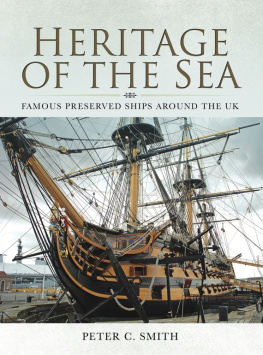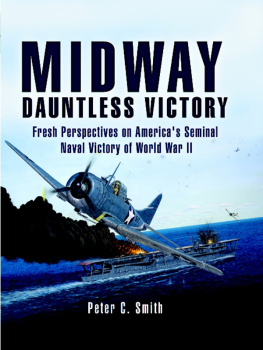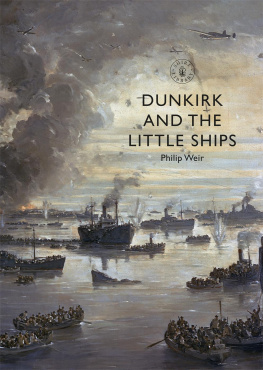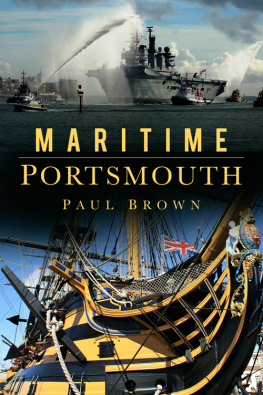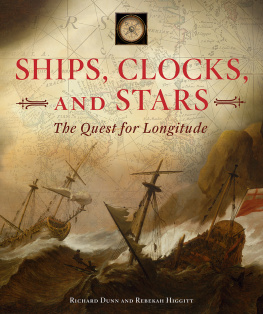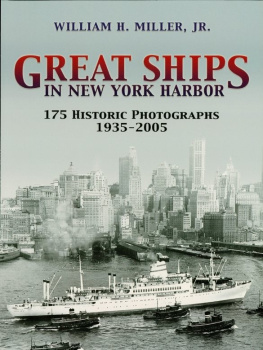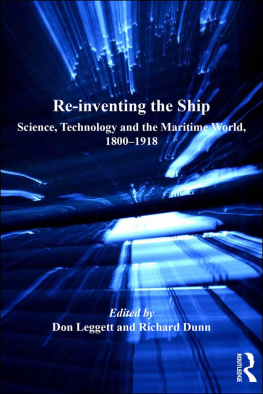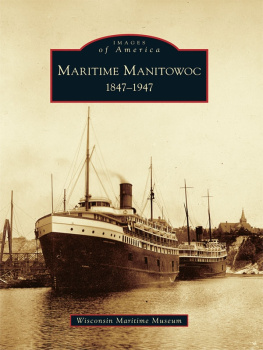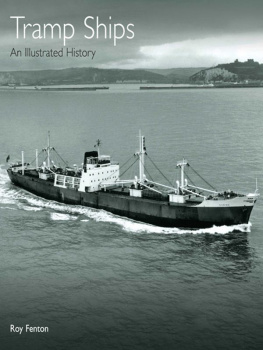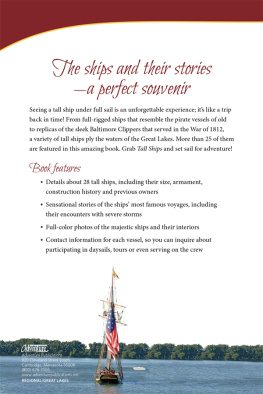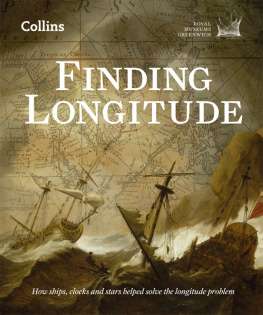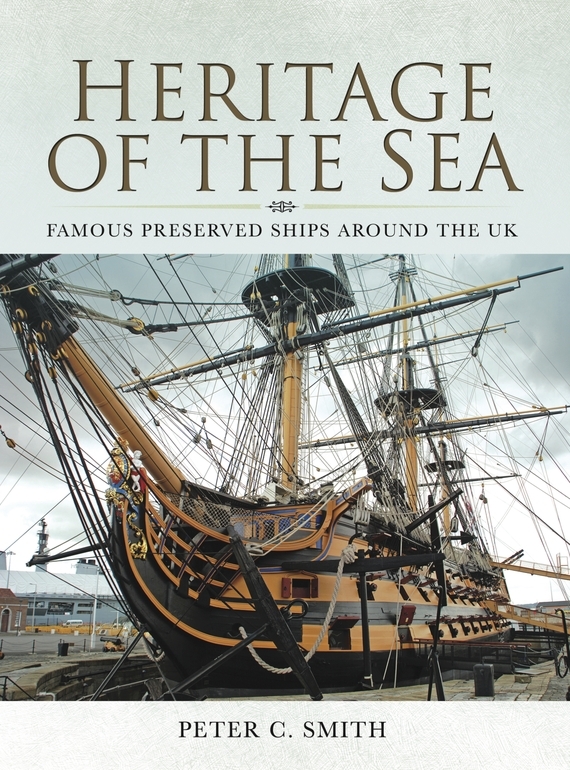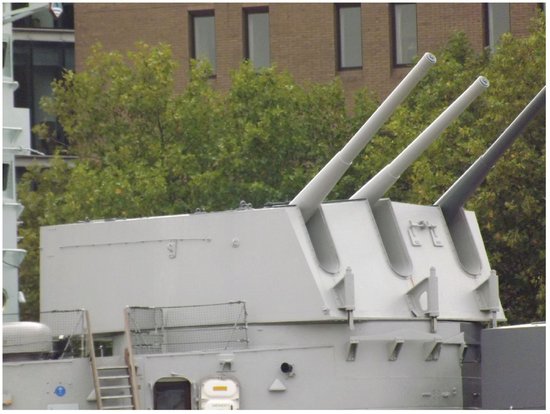BELFAST
Although, not, as is so often described, the largest cruiser ever built for the Royal Navy, the Belfast, on her completion in 1939, was the largest ship of that classification in the service to be armed with 15.2cm (6-inch) guns. She was also the last big ship to be built of steel with the stronger peace-time specifications and she is a natural, if not the most ideal, representative warship of her type to be preserved. In simple fact, many other vessels of equal or greater distinction had been sold, scrapped or deteriorated to such an extent that she was the only one capable of being preserved.
The Belfast had a very distinguished fighting life during her active service with the fleet and was, in lieu of a battleship, a suitable vessel for such preservation. Several American battleships have been saved, as well as a Japanese vessel, Admiral Togos flagship, the Mikuma; but the Imperial War Museum was only able to retain two 38.1cm (15-inch) naval guns, one from each of two of Britains scrapped battleship fleet, and these are displayed on the front lawn of that establishment in Lambeth. Belfast, although a much smaller vessel than those great ships, is the last of the all-gun warships which served the country so well in the Second World War.
The Second World War light cruiser HMS Belfast permanently moored on the south bank of the Thames above Tower Bridge. (World Copyright Peter C. Smith)
She is in direct line of descent from the Caroline, also described in these pages, and was built as a light cruiser of the pre-war Town class, belonging to the later sub-division of this type, the Edinburgh class. After the strict limitations imposed on Britain by the Washington Naval Treaty in 1921 and the subsequent London Naval Treaties of the 1930s, the Royal Navy found itself with fifteen of the big 20.3cm (8-inch) gunned heavy cruisers of the County class, which were more suitable for employment on the distant trade routes of the Empire across the world. In addition, the aerial threat was to be met by a special type of anti-aircraft cruiser, the Dido class. This left a limited tonnage available for the general duties associated with cruisers which had been put to good use by building the smaller vessels of the Leander and Arethusa classes with six or eight 15.2cm (6-inch) guns, whereby numbers could be had rather than a few larger ships. However, with the introduction in the late 1930s of the Japanese Mogami and the American Brooklyn types, which each mounted fifteen 15.2cm (6-inch) guns, it was clear that the Admiralty would have to reply or be completely outclassed. The result was the Town class but which still only carried twelve 15.2cm (6-inch) guns.
The B mounting triple 15.2cm (6-inch) gun turret of the Second World War light cruiser HMS Belfast. (World Copyright Peter C. Smith)
The reason why the number of guns in the main armament of the Belfast and her sister ship, Edinburgh, was less than that of foreign cruisers of the same vintage was due to the Admiralty thinking that our new ships should be sufficiently armoured to enable them to withstand a pounding by the 20.3cm (8-inch) guns of heavy cruisers, which meant that the increase in armour had to be compensated for by substituting triple turrets for quadruples.
Originally to be given traditional cruiser names with long and honourable histories behind them, these ships were instead named after cities and towns with the intention of creating public goodwill in the nation and a sop to provincial politicians at a time of financial stringency. Fortunately, the Belfast was to add lustre to her name.
Belfast commissioned on 5 August 1939, a few weeks prior to the outbreak of the Second World War, and, on her given displacement she carried four triple 15.2cm (6-inch) gun turrets, two forward two aft, twelve 10.2cm (4-inch) HA anti-aircraft guns, sixteen 2-pounder pom-poms and six 53.34cm (21-inch) torpedo tubes. She had a crew of 761 officers and men, a speed of 32 knots and had been built by Harland & Wolff at Belfast itself. Belfast had been launched by Mrs Neville Chamberlain, wife of the then Prime Minister, eighteen months earlier.
She joined the 18th Cruiser Squadron on the outbreak of war and was based at Scapa Flow in the Orkney Islands as part of the British Home Fleet. In October 1939 she intercepted the German blockade runner Cap Norte north-west of the Faroes. In November, however, the Belfast was heavily damaged by the detonation of a German magnetic mine laid in the Firth of Forth and had to be towed into Rosyth with a broken back. Her repairs extended over three years, as long as it had taken to build her originally, during which time opportunity was taken to absorb war lessons and she was extensively modified, including large bulges, which provided extra protection against torpedoes and mines, and she did not finally emerge as a fighting ship once more until November 1942, as almost a new vessel.
She joined the Home Fleet once more, which had as one of the main tasks at this time the covering of convoys taking vast quantities of war material to the Soviet Union through the unwelcoming Arctic Ocean. These convoy routes were beset by German U-boats and bombers operating from their bases in occupied Norway and, in addition, were always under the shadow of being suddenly attacked by the major surface warships of the German fleet which included the battleship Tirpitz, battle-cruiser Scharnhorst, pocket-battleships Admiral Scheer and Lutzow and heavy cruiser Admiral Hipper, whose Norwegian bases were within easy striking range of the massed merchant ships.
During December 1943, while at sea with the cruisers Norfolk and Sheffield, giving cover to convoys RA55A and JW55B, the Belfast, flying the flag of Admiral Bob Burnett, intercepted the Scharnhorst as she was searching for the Allied merchant ships. The three cruisers fought several sharp engagements with the German battle-cruiser, keeping her away from the convoys. The battleship Duke of York arrived on the scene accompanied by the light cruiser Jamaica, and they cut off the German vessel from her base at Altenfjord, to where she tried to flee. Reduced to a shambles by the combined fire of Duke of York and the four cruisers, and hit by several torpedoes from eight British destroyers which joined the battle, the Scharnhorst sank with heavy loss of life on 26 December. This, the Battle of the North Cape, was the last instance of British heavy ships engaging their opposite numbers in the traditional style and without any contribution by aircraft.
During the early months of 1944, the Belfast continued to operate in northern waters escorting the Home Fleet whose aircraft carriers were conducting a series of air strikes by the Fleet Air Arm against German convoys in Norwegian coastal waters. In June that same year she was selected as flagship of the Normandy landings during the invasion of France and was utilised as a bombardment ship to assist the British, Canadian and American troops ashore. On the successful completion of this service the Belfast underwent another prolonged refit, involving some changes in her armament, to equip her for service in the Pacific where the final assaults on Japan were being planned. However, this refit was not completed until July 1945 and by the time she joined the British Pacific Fleet off Tokyo the war against Japan had ended.

